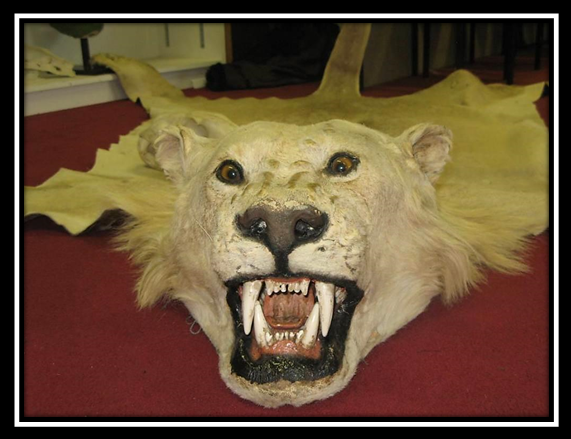|

The EU Wildlife Trade Regulation Scientific Review Group (SRG) will on September 15th review lion trophy hunting imports from Tanzania, Zambia and Mozambique. The SRG will largely rely on a document prepared for them by their consultants at the United Nations Environment Program/World Conservation Monitoring Centre (WCMC) as well as independent lion experts.
This report is available here:
The Mozambique report is not yet available.
I would highly recommend you read this report. To save time you can skim through lots of it, or just read the nitty gritty as I will provide for you here:
1. Tanzania
a) Tanzania is supposed to be home to most of the lions remaining in Africa. However, this assertion is not based on very much information – the report states that “updated information on population size and trends was reported to be lacking for most populations”.
b) While some sort of “survey” of lion populations had been undertaken in 2014 in a small sample of tourist hunting destinations, these results are not yet available.
c) It was claimed that there was a lack of transparency around trophy hunting in Tanzania, and experts questioned both the resources, independence and impartiality of any population surveys carried out by Tanzania government agencies.
d) The Tanzania government accepts a “survey” carried out by vested interest pro-hunting group IGF in 2010 (a mail survey in fact) that estimates the Tanzania lion population at 16,800 and occurring across at least 85% of Tanzania. This is a complete nonsense.
e) The report notes that where actual lion populations have been more rigorously examined, they show a decline of 66% in population numbers from 20 years ago. Trophy hunting was a major contributor to such declines where hunting areas border national parks.
f) The government itself notes an increase in the number of trophy items impounded by wildlife authorities across the country indicating the illegal killing of lions and also that there is a concern about a growing trade in lion bones to Asia.
g) Lion quotas continue to be assigned to hunting concessions without any scientific data on source populations and therefore sustainability.
2. Zambia
a) Zambia is eager to re-instate lion trophy hunting in 2016 after banning the practice in early 2013 over concerns about the sustainability of hunting, the lack of information about lion populations, and the corruption within the trophy hunting/concession industry.
b) A new Minister over-ruled all those good concerns and said Zambia has 4,000 lions. The report indicates that there might be only 307 lions left in the major conservation areas.
c) The report states that lion hunting quotas have been excessive for many years, and that male lion depletion in national parks was largely due to trophy hunting on the borders.
d) The new Minister wants a quota of 46 adult male lions per year. This shows how out of touch with reality the Zambia government is.
e) The WCMC asked for clarification about Zambia’s lion numbers as well as the status of their national lion conservation plan. No answers were forthcoming.
f) The Zambia Wildlife Authority (ZAWA) is broke and relies on trophy hunting fees for income. The report notes that rural communities are only very marginally involved in benefit distribution from hunting income. The report also acknowledges widespread corruption.
LionAid summary
a) Tanzania and Zambia have no basis of population counts to allow any future lion hunting offtake under rules of sustainability. Both countries operate with wishful thinking to set their quotas.
b) Tanzania even last year said they had a population of over 100,000 elephants. We now know, via independent counts, that they might only have 34,000 elephants remaining as a consequence of poaching at an industrial and doubtless state supported scale.
c) Both Zambia and Tanzania have been banned from any future elephant trophy imports into the EU by the SRG – basically, the SRG did not trust the data provided by the governments.
d) LionAid is hopeful that the SRG will likewise ban all future EU lion trophy imports from Tanzania and Zambia given that there cannot be any measure of sustainability applied to offtake. Neither Tanzania nor Zambia have any idea of how many lions remain in their countries – and perhaps more importantly, within their hunting concessions. The SRG should not be swayed by hopeful and doubtful population estimates provided by those countries. And even if they might be so persuaded, they should use the precautionary principle – if you don’t know, then always err on the side of caution.
e) The SRG should immediately ban all lion trophy imports into the EU from Tanzania, Zambia and Mozambique. There is simply not enough data to call such imports sustainable under EU regulations. Where lions have been monitored in Tanzania we see a 66% decline. Where the Zambia government says they have 4,000 lions, we see that there might only be 400 or so left. Elephant trophy hunting imports have been banned from Mozambique – and so should lions – there are simply no accurate records available from Mozambique lion populations to allow any concept of sustainable offtake.
The decision will be taken on September 15. LionAid would predict, based on our meetings with the EU Commission and this report to which we contributed, that Mozambique, Tanzania and Zambia will join Benin, Burkina Faso and Cameroon on the banned list for trophy hunting imports.
That would be wonderful would it not?
|




